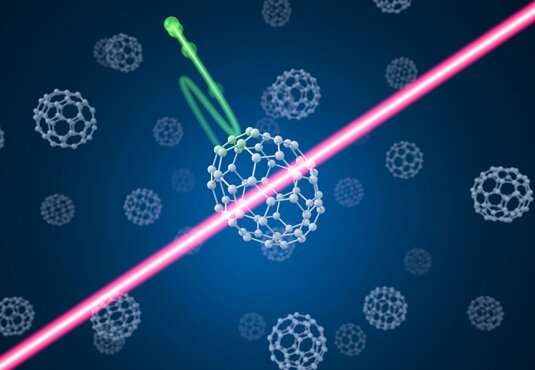Transformation through light

Laser physicists have taken snapshots of how C60 carbon molecules react to extremely short pulses of intense infrared light.
C60 is an extremely well-studied carbon molecule, which consists of 60 carbon atoms and is structured like a soccer ball. The macromolecule is also known as buckminsterfullerene (or buckyball), a name given as a tribute to the architect Richard Buckminster Fuller, who designed buildings with similar shapes.
Laser physicists have now irradiated buckyballs with infrared femtosecond laser pulses (one femtosecond is a millionth of a billionth of a second). Under the influence of the intense light, the form of the macromolecule was changed from round to elongated. The physicists were able to observe this structural transformation by using the following trick: At its maximum strength the infrared pulse triggered the release of an electron from the molecule. Owing to the oscillations in the electromagnetic field of the light, the electron was first accelerated away from and then drawn back toward the molecule, all within the timespan of a few femtoseconds. Finally, the electron scattered off the molecule and left it completely. Images of these diffracted electrons allowed the deformed structure of the molecule to be reconstructed.
Fullerenes, the discovery of which was honored with the Nobel Prize in Chemistry in 1996, are stable, biocompatible, and exhibit remarkable physical, chemical and electronic properties. "A deeper understanding of the interaction of fullerenes with ultrashort, intense light may result in new applications in ultrafast, light-controlled electronics, which could operate at speeds many orders of magnitude faster than conventional electronics," explains Professor Matthias Kling.
More information: Harald Fuest et al. Diffractive Imaging of C60 Structural Deformations Induced by Intense Femtosecond Midinfrared Laser Fields, Physical Review Letters (2019). DOI: 10.1103/PhysRevLett.122.053002
Journal information: Physical Review Letters
Provided by Ludwig Maximilian University of Munich



















